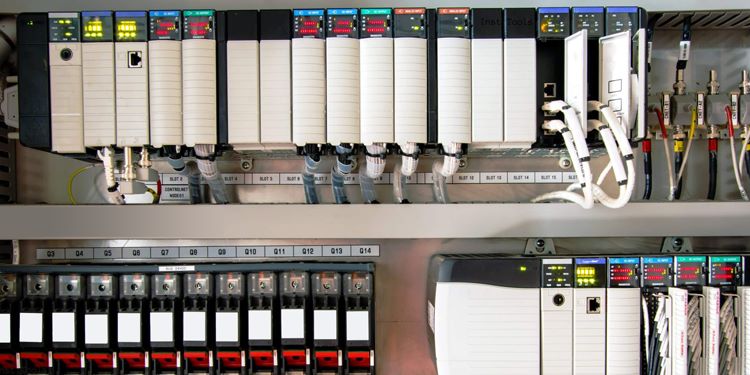Industrial automation relies on seamless data exchange between hardware and control systems. By integrating RFID (تعريف تردد الراديو) with PLC (Programmable Logic Controller) نظم, equipment manufacturers can effectively improve their market competitiveness. From assembly lines to smart warehouses, PLC-RFID solutions bridge the gap between physical operations and digital control, enabling real-time decision making.
Benefits for Equipment Manufacturers:
- Enhanced Asset Tracking: Automate inventory management for PLC control systems using RFID tags.
- Reduce downtime: Monitor equipment health with RFID-based predictive maintenance.
- Error-proofing: Ensure parts are assembled correctly with RFID-based automated quality checks.
- Scalable solutions: Adapt RFID-PLC systems to environments ranging from automotive plants to food processing plants.
How PLC-RFID integration works:
1.Hardware integration:
- القراء RFID: Deployed at strategic points (e.g., conveyor belts, entry gates) to scan tags.
- PLC controllers: Process RFID data via I/O modules or fieldbus protocols (e.g., PROFINET, Ethernet/IP).
- علامات RFID: Attached to assets, أدوات, or products for unique identification.
2.Data flow:
RFID readers scan tags and transmit their UIDs (unique identifiers) to the PLC.
PLC cross-references the UIDs with databases (e.g., SCADA, مس) to trigger actions such as:
- Start/stop machines.
- Update inventory logs.
- Flag defective items.
3.Software Compatibility:
- PLCs such as Siemens S7-1500 or Allen-Bradley ControlLogix support RFID integration through dedicated libraries such as Siemens RF600 API.
Top RFID Tags for Industrial PLC Systems
Choosing the right RFID tag ensures reliability in harsh industrial environments. Here are the high-performance tags that manufacturers around the world trust:
| Tag Model | التردد | Range | قوة التحمل | Ideal Use Case |
|---|---|---|---|---|
| UHF Anti-metal Tag | التردد فوق العالي (860-960 CH4) | 8m | IP68, -40درجة مئوية إلى + 85 درجة مئوية | Automotive assembly lines |
| PPS Tags | التردد فوق العالي | 6m | IP68, الكيميائية المقاومة | Chemical processing plants |
| HY-PPS Φ15 | HF | 0.3m | High-temperature tolerance | المواد الغذائية & beverage packaging |
 How to Choose the Right PLC-RFID Solution
How to Choose the Right PLC-RFID Solution
Evaluate Environmental Needs:
- For high temperature areas, choose heat-resistant RFID tags.
- In metal-rich areas, use anti-metal tags like the Balluff BIS M-18.
Match the frequency to the use case:
- التردد فوق العالي (الترددات العالية جداً): Long-range tracking (e.g., pallet management).
- HF (عالية التردد): Short-range, high-precision tasks (e.g., tool tracking).
- Ensure PLC compatibility: Verify the communication protocol between the RFID reader and the PLC (e.g., Modbus, OPC UA).
Whether you are designing a new PLC-RFID solution or upgrading an existing infrastructure, our team provides a tailored integration strategy. اتصل بنا من أجل:
- Customized RFID tagging recommendations for your industry.
- End-to-end PLC-RFID system design.
لدينا:
PLC RFID Integration Solutions
RFID Tags for Industrial Automation
RFID Readers for PLC Systems
Industrial RFID Tracking Systems
PLC Automation with RFID Technology
Best RFID Tags for Harsh Environments
الأسئلة المتداولة
Q: What is the role of RFID in PLC automation?
A: RFID provides real-time data to the PLC, enabling automated decisions for tasks such as inventory tracking and quality control.
Q: Can RFID be used with legacy PLC systems?
A: نعم! Retrofit kits, such as the Phoenix Contact RFID Interface, enable RFID integration with older PLC models.
Final Thoughts
PLC-RFID integration is no longer optional—it’s a competitive edge. By embedding industrial RFID tracking systems into your solutions, you empower clients to achieve Industry 4.0 readiness. Start your journey with the right hardware, and let data drive efficiency.






